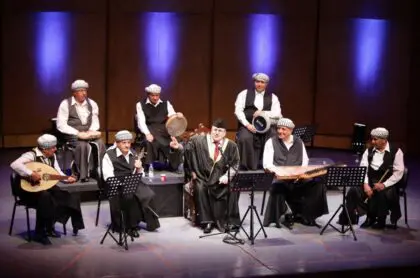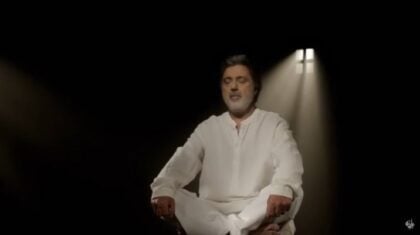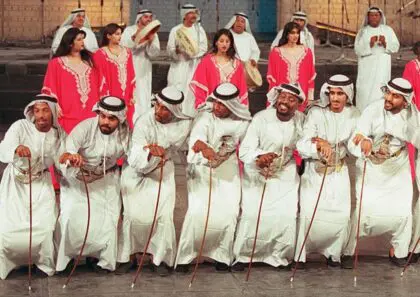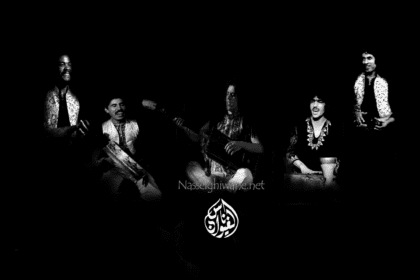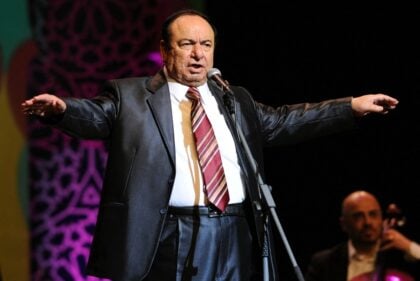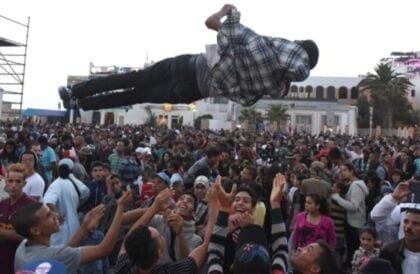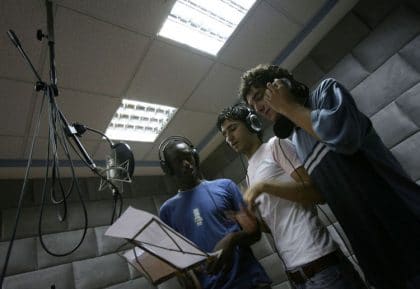In a region often divided by political, ideological, and sectarian conflicts, music remains a common factor among the people of the Middle East and North Africa (MENA). Those who master the language of the soul and heart enjoy popularity all over the region; a popularity that lives on even after composers, singers, and musicians have gone. Whether you are in your country or abroad, you will be accompanied by Umm Kulthum (Egypt), Mohammed Abdu (Saudi Arabia), Lutfi Bushnaq (Tunisia), Fairouz (Lebanon), Nazem al-Ghazali (Iraq), and many, many others. Fanack presents the history of music in the MENA region and will continue to follow the new musicians, songwriters, and performers who are emerging, whether they follow traditional rules or break new ground, to reflect the changing realities in the region.
Music played a significant role in practicing religious rituals and the royal court life in most of the old Middle East. According to researchers, music in the Middle East was deduced from songs and rhymes that were night companions of tribes and clans during their trips. These trips were features of those who search for food and water in the bygone eras. The lyrics of songs had a significance that exceeds their rhymes.
The spread of music reinforced communications with neighboring cultures, like the Babylonian and the Assyrian empires that were thriving in the region back then. The Bedouin tribes also carried cultural messages from and to neighboring communities.
Music of the Middle East is that of the Arab, Turkish and Persian world. Despite the linguistic and cultural differences associated with it, this music has merged into a single great inheritance, thanks to Islam; its unifying element. Music has been used to practice some activities and religious rituals. In general, these rituals accompanied by musical gestures (Not considering it pure music in its essence) were limited to Athan and Quran recitation. Although, Sufis have employed music (and even dancing) in their praying rituals.
With the spread of Islam during the Abbasid Caliphate, the contributions of Ziryab significantly developed Middle-Eastern music through a series of refinements. This includes inventing the Art of “Mwashah”, “Maqamat” and crafting modifications to the Oud instrument. Consequently, a golden era of arts prosperity and cultural progression started to take over the region.
In the 9th century, Arabic music has evolved greatly. Arabs have had vast musical collectives, a musical history recorded and written, and well-trained musicians and singers who made musical life very active in the royal court. In addition, the current traditional Persian music has evolved during the middle ages after the spread of Islam. Abu-Nasr Al-Farabi was one of the famous musicians during this epoch, as he helped in forming the musical tradition in the Islamic world through his book “Kitab al-Musiqa al-Kabir”. The Ottoman era was one of history’s most illustrious periods in terms of musical culture. The systematization of their music was one of the most important musical events of the 13th century.
After the expulsion of Jews from Spain by the end of the 15th century, and with the fall of the last banner of Muslims that followed, music moved with people towards north Africa, the Balkans, Turkey, and Palestine.
The 19th century was featured by the connection with the west, which brought a desire to define and clarify the musical pattern. This is partially attributed to the desire to define the flourishing Arab nationalism features back then, in addition to the inevitable clash with western music. Music evolved again and went through a significant process in the light of these western influences and more, starting from the 19th century’s end.
The 20th century was described as an exceptional era for eastern music. Egypt was the destination of various arts, where Umm Kulthum and Al-Qasabji were on the eastern art throne. They were accompanied by Mohamed Abd Al-Wahab, Asmahan, and Farid Al-Atrash from Syria. The Arabian Peninsula witnessed wide musical prosperity that reached its peak. New voices emerged, among which were Mohamed Abdou, Talal Madah, and Abu Bakr Salem. In Lebanon, The Rahbani musicals founded the lyrical heritage of the Levant through Fayrouz’s voice. Lotfi Bouchnak emerged in Tunisia, Nazem al-Ghazali in Iraq, and the Master of the Halabi Qudud Sabah Fakhri in Syria.
On the other hand, pop music evolved rapidly in Iran. Broadcasts promoted various genres such as Rumba, Tango, and Waltz. Although Iranian pop music imitated western music when it has been founded, yet it formed its unique identity over time. The emergence of prominent Iranian stars in the musical world like Viguen contributed to making Iran one of the countries that have been most influenced by western rock music in the east.
Similarly, a wave of punk and rock music swept Turkey in a time not far from that when these genres evolved in Europe and the US. Some of the most famous musicians and singers in Turkey have gained fame, such as Barış Manço and İbrahim Tatlıses.
In the early years of the current century, rap music was ignited to express the voice of revolutionaries and radicals of all orientations across the Middle East and North Africa.




